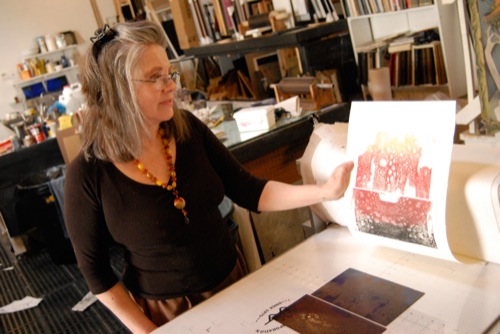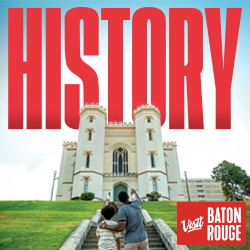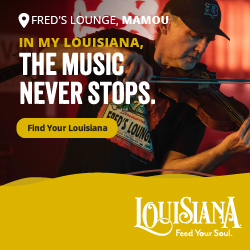
Courtesy Paducah CVB
The historic Ohio River flood of 1937 sent water swirling three miles into Paducah, Ky., inundating its historic downtown, which sits on the banks of the Ohio at its confluence with the Tennessee River.
It was the third major flood in Paducah’s history — Clara Barton, founder of the American Red Cross, came to Paducah to help with relief efforts following the 1884 flood — so in the 1940s the Army Corps of Engineers erected a tall concrete floodwall for miles along the river bank to protect the city.
Although it has proven its worth, such as last year, when water was within a few feet of its top, the wall was a rather drab addition to the cityscape.
“We had just this concrete wall,” said Fowler Black, sales director for the Paducah Convention and Visitors Bureau.
In 1996, after seeing murals that had been painted on the floodwall in Portsmouth, Ohio, a group of local citizens decided to do the same for Paducah. Robert Dafford, the Lafayette, La., muralist who painted the Portsmouth murals, led a team that produced 51 murals along a stretch of the floodwall in downtown Paducah.
“They portray different elements of Paducah’s past,” said Black.
The colorful murals depict, among other scenes, prehistoric Native Americans in the area, the town’s founding by William Clark of the Lewis and Clark Expedition and the city’s river industry, which is still a major part of its economic life.
“We just finished the last one, a tribute to the Boy Scouts,” said Black. “Paducah has one of the oldest Boy Scout troops in the country.”
Now, the floodwall not only protects the city but also provides a colorful and informative addition to downtown that has become another tourist attraction for the western Kentucky city.
On a recent visit to Paducah, I took a leisurely evening stroll along the murals on Water Street. I then joined Black and Rosemarie Steele, the CVB’s marketing director, the next two days for an examination of the city’s rich history and its progressive arts and culture scene, which has led to the tourism bureau’s slogan: Paducah, Kentucky: Distinctively Creative.
“Creativity flows through here like the river,” said Steele. “Arts and culture, that is what our city is. You can see the vibrancy here.”
On the map
Although arts have long been important in Paducah, my first stop was the place that really put Paducah on the national arts map in 1991.
“We are the largest fiber art museum in the world,” said Frank Bennett, director of the National Quilt Museum, so designated by Congress. “There are various other quilt museums, but this is the mecca.”
The museum has three galleries, two of which feature about 10 traveling exhibits a year. The middle gallery has 50 to 60 rotating selections from the museum’s permanent gallery of 328 quilts.
“What we try to do in this gallery is give all the different styles,” said Bennett.
Although there are a few of what would be considered classic quilts, most of the quilts are by contemporary quilters, and the combinations of designs, vibrant colors and workmanship are an impressive and inspiring form of art.
“We have two main audiences,” said Bennett, “cultural tourists and quilters. There are 21 million active quilters in the United States. That’s not a small audience. It is a very sizable community.”
Bennett said that in an average month, the museum draws visitors from more than 40 states and several countries. This May, there were visitors from 46 states and seven countries.
“People really do go halfway around the world to be here,” he said.
The National Quilt Museum has spun off several large fabric shops in downtown, and the American Quilter’s Society Annual Quilt Show and Contest each April draws nearly 35,000 quilters from around the world.
“Quilting is the wheelhouse of our tourism,” said Black.










